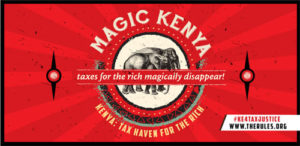Coal mining in central-Eastern India forests threatens wildlife, including tigers and elephants, and the livelihoods of millions that are dependent on the forests. Greenpeace and others are seeking a “moratorium on all new coal mining in forest areas until the government sets criteria for ‘inviolate’ forests (closed to mining) through a transparent consultative process.” Raising public awareness by engaging people in participatory actions is a key element of the campaign.
The story of this campaign is woven together with creative engagement strategies that went well beyond emailing or texting lists of people to have them “sign this petition.”
We spoke with Greenpeace India about their team’s work, particularly the use of missed calls to get people behind the new (and virtual) Republic of Junglistan. The team chose to help make this threatened area something more unique and tangible than “threatened forests in Central-eastern India.”
The result was the Republic of Junglistan. People pledging support for the campaign in opposition of coal mining were given free citizenship to Junglistan (and a passport to prove it).

Junglistan passport created by Greenpeace India
Don’t call me. I’ll call you. But don’t pick it up.
The team skipped traditional (and guerilla) marketing of Junglistan. How did people support the campaign to protect forests and become citizens of Junglistan? Missed Calls.
For many in the West, missed calls are a bit of a mystery but the practice has been around for years (see this 2008 post on missed calls from MobileActive). Rather than send a text message to sign up or get information a caller dials a number on their phone and hangs up. Nobody answers but the incoming number is saved.
Missed calls began as a way to save money since no cell minutes are used. They have evolved today and are are used for a range of commercial and organizing purposes.
In the Junglistan campaign, callers knew that dialing the number was a way to indicate their support for the campaign. Callers were adding themselves to the list. A vendor sets up the phone number and tracks incoming numbers. People see a number in an ad, an email, a video or text message and all they need to do is call the number and hang up.
Organizers set a goal of 80,000 missed calls. They received 100,000. How did they get there? The team reported three main tactics:
- We texted our captive lists (supporters, cyberactivists with phones, etc) to get them to “sign” the “petition” — essentially just a missed call to say you want to save forests from coal mining.
- There’s a missed-call “cricket channel” with about 2.5 million users on a big match day. We got a gratis 60-character ad on this channel that sent some traffic to us.
- We used schools — the Public Engagement team reached thousands of students across the country who were each given a sheet with 10 numbers (of neighbours/parents/etc.) to fill in. So viralisation was hardwired into the project at the ground level.
A “Tell your friend” ask was baked into the first missed call contact to help grow the list:
After making a missed call the new participant received an SMS response offering a special tiger-approved chainsaw-proof Greenpeace badge if the participant got ten friends to join the campaign. A new missed call number was provided in the message and anyone calling that number in the next two hours was seen as a referral from the first participant. Our tell your friend growth rate was 13% (off-peak) to 48% (peak). In other words, at a certain point of the campaign 48% of all numbers were referral numbers that came in through mobile activists using this “personal hotline” tool to invite others to join the campaign.
Student outreach also played a role. Students were asked to talk with friends and family about the campaign and encourage them to also make missed calls. School outreach didn’t generate as many missed calls as planned but with several thousand contacts made it served as an important channel and a way to educate and engage students.
Why not SMS/Text?
Looking at this campaign from the West one is likely to ask “why not use SMS?” The team in India talked to us about running a missed calls pilot campaign a year ago that showed much higher performance for missed calls compared to SMS. In that part of the world, missed calls are part of the communications fabric and SMS just doesn’t cut it. Missed calls are fast, incur no cost, and less prone to error in areas with high illiteracy and 27 distinct regional languages (each with different ASCII script).
Missed call phone numbers are also easy to work into video and other communications channels. The team put together a Junglistan-themed version of the KolaveriDi video (watch it below) that has over 38,000 views thus far. The team reported 11 signups via email from the first 20,000 views. The video has generated over 3,000 missed call signups, however.
Why this works
The India forests campaign continues. Public engagement is playing a major role and that is happening through a unique combination of channels that works for citizens, not just the campaigners.
Follow the data: Missed calls worked better than SMS in earlier testing so they went entirely with missed calls.
Consistent message: Missed call outreach was found in outreach to existing contacts by text, email and other channels. Missed call numbers were in online video, a missed call “cricket channel” on a big match day, in outreach to schools, and at other events. It became hard to miss the missed call number.
Tell an interesting story: Coal mining poses an enormous threat to huge forested areas of India. The way the mining is done means the removal of entire long-established communities as well as endangering tigers and other wildlife. But, unfortunately, threats to communities and wildlife aren’t new and sometimes they’re not that notable to a cynical public. The mobilisation team gave the region life as the Republic of Junglistan, gave people the opportunity to become citizens of Junglistan (and make their voices heard), and branded the campaign with a tiger mascot. The tigers and Junglistan storyline continued and helped the campaign stand out.
Our colleagues in India want to be sure that a nod is given to Greenpeace Poland staff for sharing their experience and guidance earned during the Rospuda Valley campaign from 2005 to 2008. Elements of this campaign are based on that work though many details have been to the unique needs of India.




